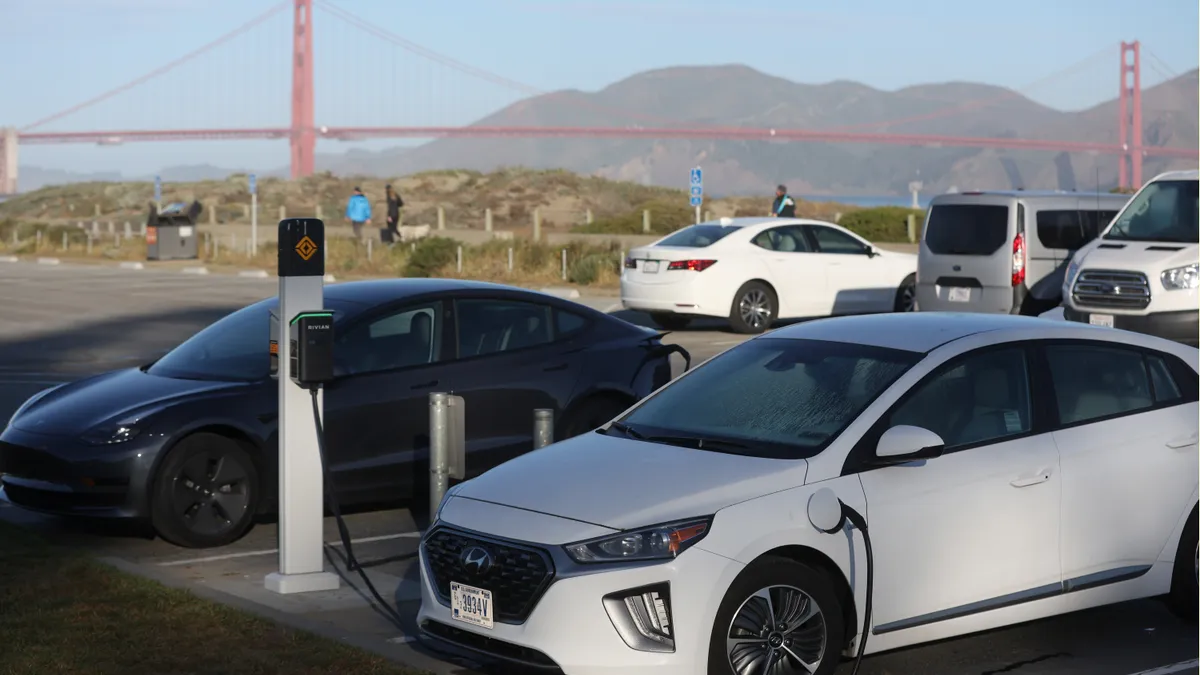Dive Brief:
- The California Air Resources Board (CARB) released proposed new regulations this week to update the state’s passenger vehicle emission standards and zero-emission vehicle requirements as part of its Advanced Clean Cars II (ACC II) program.
- California-based equity and health advocates are looking for stricter mandates to ensure disadvantaged communities have access to electric vehicles. "We want to see not just something that is voluntary, but something that is really pushing automakers to do more for our low-income communities," said Román Partida-López, legal counsel for transportation equity at the Oakland-based Greenlining Institute, a nonprofit organization advocating for communities of color.
- A 45-day public comment period will follow the release of the draft regulations, with public hearings by the board in June and August, when CARB will vote on whether to approve the new regulations.
Dive Insight:
With California's goal of achieving 100% of sales of new passenger cars and trucks to be zero-emission vehicles by 2035, CARB is aiming its new regulations toward reducing emissions from new fossil fuel-powered vehicles beginning in the model year 2026 while also reducing exposure to vehicle pollutants in frontline communities.
"Our hope is that the draft rule has an increased stringency so that we are seeing more [electric] vehicles on our roads," said Partida-López.
But new electric vehicles are out of reach for many drivers. The average price of an electric vehicle in March 2022 was $65,977, according to data released by Kelley Blue Book this week. Partida-López wants to see automakers required to provide discounted vehicles available to these communities through existing mechanisms such as CARB's Clean Cars 4 All program.
Kevin Hamilton, co-director and co-founder of the Central California Asthma Collaborative, agreed: "We need to see something specific in the regulation to make sure that a certain percentage of these vehicles are not only available to these folks in the lower-income price range but can meet the needs of a family and are available in the communities that are often geographically isolated."
According to CARB, $5.2 billion in California climate investments have gone to disadvantaged or low-income communities and households since 2014. CARB says that the ACC II program will reduce thousands of tons of emissions of reactive organic gasses and oxides of nitrogen, along with small particulate matter by 2040. The regulations are also expected to reduce cumulative greenhouse gas emissions by an estimated 440 million metric tons of carbon dioxide from 2026 to 2040.
In a press release issued this week by CARB, Gov. Gavin Newsom said: "We’re committed to ensuring that the communities most burdened by air pollution share in these benefits, with cleaner transportation options, cleaner air, increased energy efficiency, and more livable communities."












